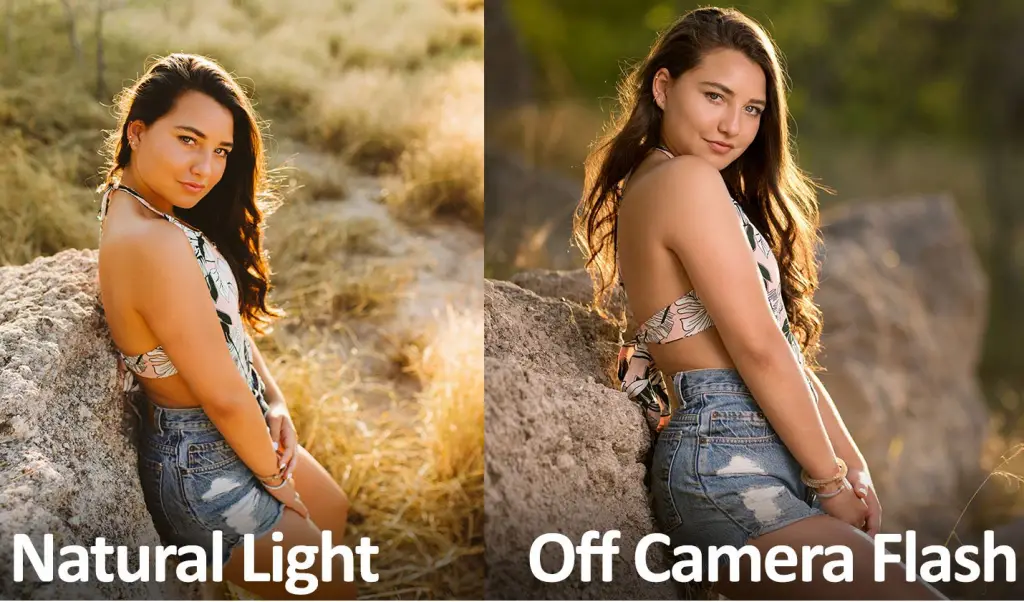If you are looking for a way to dramatically improve your flash photos, you need to move your flash unit away from your camera. This means you will need an external flash unit and a means to hold and trigger it off the camera.
Why should you go to the trouble and expense of using a remote flash when your camera most likely has a perfectly good built-in flash? Almost all cameras that feature a built-in or pop-up flash unit place the flash directly over or just to one side of the lens. Any professional photographer will tell you that is the worst place for the flash to be. This article will explain how you can use a remote flash to improve portraits of people, but most of the following will apply to any subject.
Consider the list of problems created by having your the flash inline or near the lens. First off, this is where red-eye originates. If the flash is fired from an area in close proximity to the lens, the chances of your subject displaying red-eye is increased substantially . Some cameras offer a red-eye reduction mode and you can usually fix the problem by editing your images with software. Neither of these solutions is ideal, however. The best fix for red-eye is to move the flash away from the axis of the lens. The further the flash is from the lens, the less chance that people and animals in your photos will exhibit red-eye.
The second problem with direct, on-camera flash is the harsh shadows it creates behind your subject. If you are outdoors or in a very large open room, you might be able to avoid this problem. If your subject is near a wall or a large upright object, direct flash will cause a shadow to appear just behind their head. The closer they are to the wall, the harsher the shadow will appear. This is annoying for subjects with light colored hair, but it is deadly for photos of brunettes. The shadow tends to merge with the dark hair to create a horrendous blob on top of the person’s head. Once again, you can solve this problem with off-camera flash. If the flash unit is held high or to one side, you can cause any shadows to fall outside of the photo area.
Another short-coming of direct flash occurs when you are shooting someone with eye glasses. You fire that direct burst of light into the lenses of their glasses, which promptly reflect it right back to your camera. The result is a nice portrait of your subject with white streaks where there eyes should be. Moving the flash will allow you to aim it in such a way that the glasses show no reflections.
Direct flash can also cause your subject’s skin to reflect light, causing bright hot spots on their cheeks or forehead. The fix is the same as that for eyeglasses; move the flash.
Finally, direct flash can cause a “deer-in-the-headlights” look on your subject’s face. The flash wipes away all the natural shadows we are used to seeing on a person’s face and leaves everything looking flat. Lighting experts know that side lighting exaggerates texture, while frontal lighting minimizes texture. You might want to tone down the texture in someone’s face to a degree, but you don’t want so much head-on light that eyes, nose, mouth and facial features appear flat.
All of these problems can be eliminated by simply moving the flash so it is not inline with the lens. How you accomplish this will vary with the type and brand of camera you are using. The easiest way is to use a flash bracket, which mounts a remote flash high and off to one side of the lens. You can also simply hold your camera with your right hand, while directing a remote flash with your left hand. Both of these solutions assume your camera has a PC port or hot-shoe that will allow you to use a sync cord to fire a remote flash.
If you camera lacks a way to sync with a remote flash, your options are more limited. You may be able to use an optical sensor to trigger a remote flash when it senses the light from your built-in flash unit. Many cameras, however, fire a pre-flash beam before the actual exposure. This beam is used to calculate exposure and focus. If this is the case with your camera, a generic optical trigger will not work, because the pre-flash will trigger the remote unit too early to have any effect.
Should you discover that you camera doesn’t support remote flash in any way, then you won’t be able to take advantage of off-camera flash. You can attempt to minimize the effects of on-camera flash by moving your subjects away from walls and adding extra tungsten light to reduce shadows.
If your camera will support moving the flash off-camera, don’t hesitate to start using this technique. Once you see how much better your images look using remote flash, you will never go back to shooting with a built in or hot-shoe mounted flash.
Source by Tom Bonner
